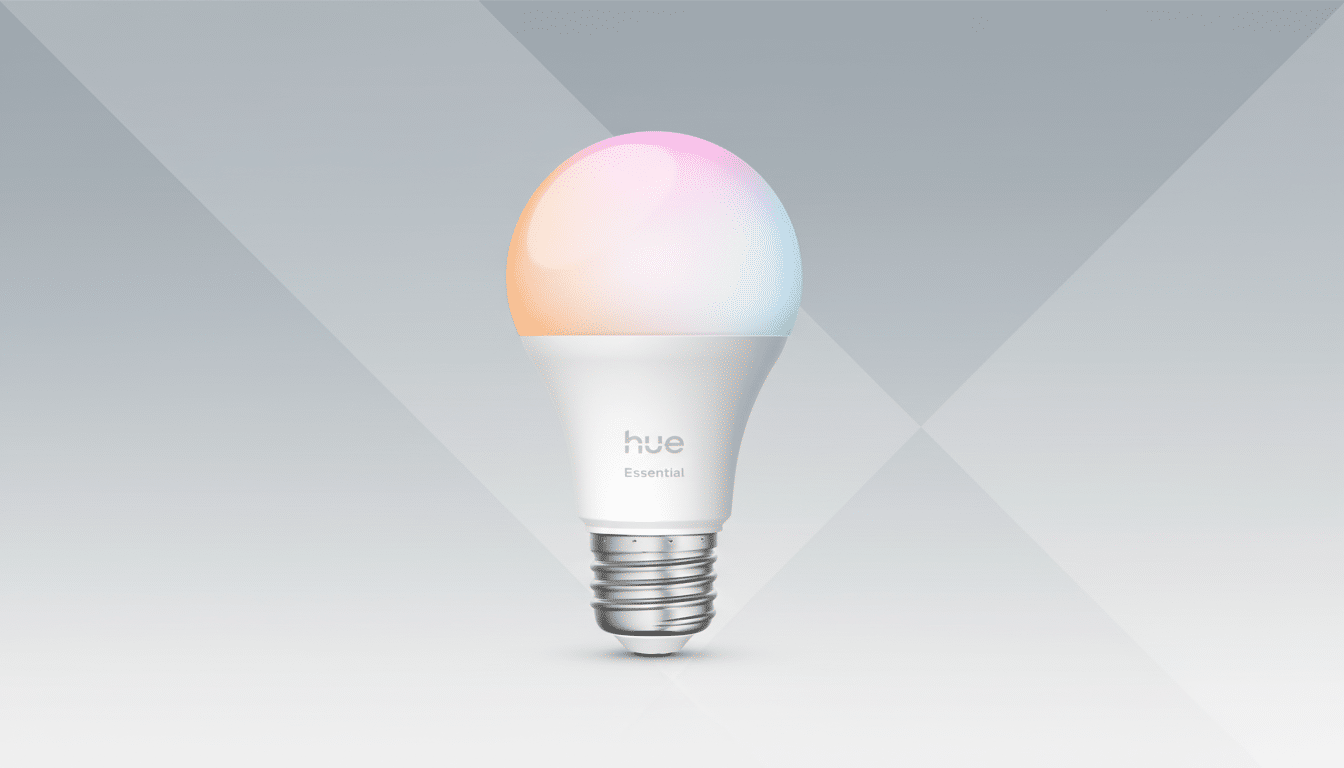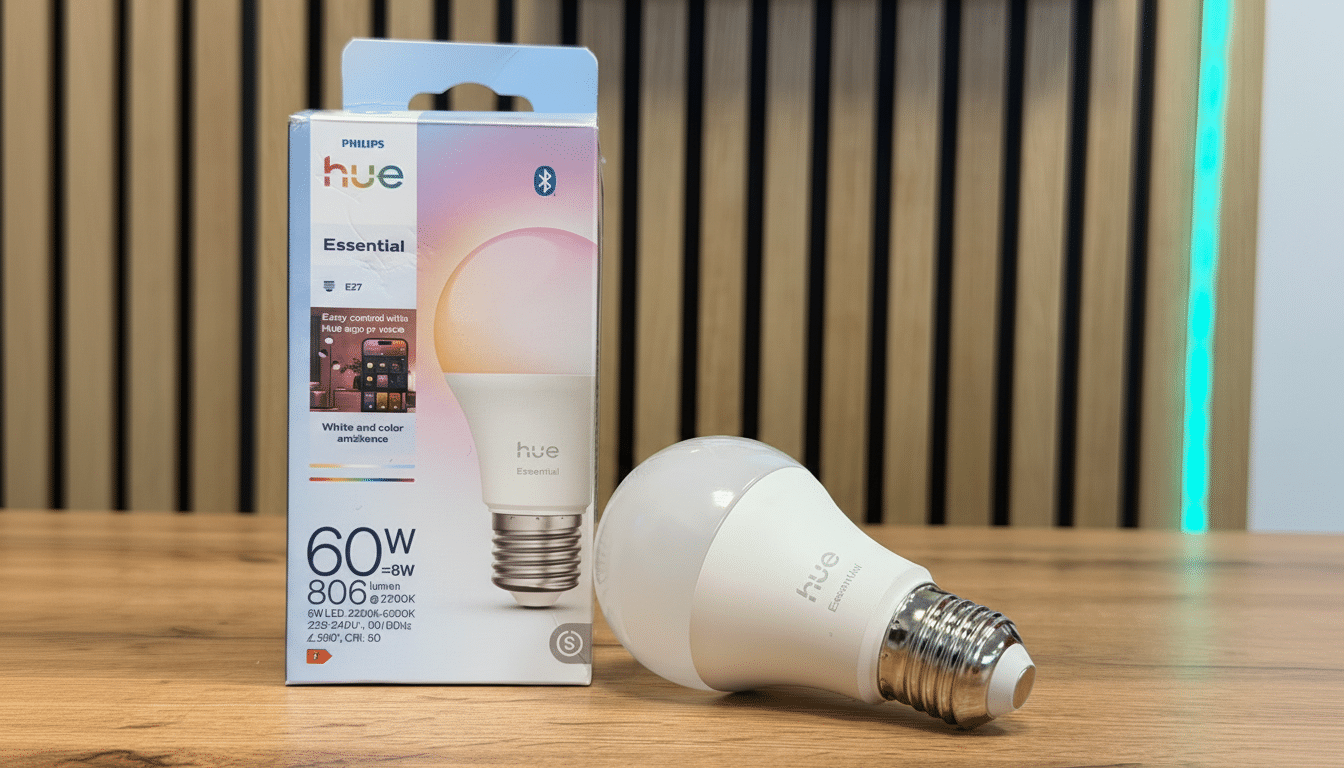Philips is expanding the smart lighting tent with an entire Hue lineup overhaul, with the centerpiece being new, budget-friendly Hue Essential bulbs and a more powerful hub.
The move reduces the cost of entry and adds more performance and standards support that power users have been clamoring for.

Budget bulbs will expand the Hue user base
For bargain hunters, it\’s the Hue Essential bulbs that you\’ll lunge for first. Standard A19/E26 models start at around $25 each, or about $15 each when purchased in a four-pack, a price point that comes way under the cost of traditional Hue LEDs. That brings Philips that much closer to mainstream competitors while keeping its polish and app ecosystem intact.
There are trade-offs. The essential bulbs dim down to 2 percent rather than the whisper-low 0.2 percent you get from the flagship series, and they cover a less wide color spectrum at 2,200-6,500 K. For most rooms, that’s more than fine, but color purists and home theater tinkerers will find the difference. In addition to BR30 and GU10 options, the range will grow to include lower-cost tiers across recessed and spot fixtures.
The brightest bulbs introduce deeper dimming and broader whites
Philips is also raising the ceiling on all its standard color bulbs. The updated models darken as low as 0.2 percent minimum brightness —good for browsing the web after bedtime—and boast a full visible white range of 1,000 to 20,000 K, or from warmer-than-candle ambers up to clinical, blue-shifted whites some users favor for tasks requiring concentration. It’s a rare kind of spec in consumer lighting, and a hat tip to Hue’s enthusiast base.
Hue Bridge Pro adds scale and speed
For big homes and heavy automators, the new Hue Bridge Pro is the largest architectural change in years. Costing around $99, it states compatibility with “150+ lights” and “50+ accessories” — a near tripling of the capabilities of the present bridge, which will still be available as the lower-cost option at around $66. That’s a leap — meaning what that many end users provision who spin up two or more bridges today, can safely converge to a box once software support lands in the second half of this year.
Aside from your device’s limits, the Bridge Pro has also been built for better responsiveness and more headroom for scenes, sensors and entertainment features. Any dedicated bridge, like Hue’s, has ensured low-latency control and robust automations, something that Wi-Fi bulbs have historically had difficulty matching en masse. The new hardware telegraphs that advantage.
Matter-over-Thread joins the party
Philips is implementing Matter-over-Thread throughout its new accessories, working to bring Hue in line with the cross-brand standard led by the Connectivity Standards Alliance. In a practical sense, Thread contributes mesh reliability and low power capabilities, while Matter adds out-of-the-box interoperability with platforms such as Apple Home, Google Home and Alexa.
Hue’s bridge-heavy approach isn’t going anywhere — the Bridge Pro persists as the power user hub — but the more general Matter support here lessens setup friction and should help mixed-brand homes perform more predictably overall.
It’s a restrained move that retains Hue’s advanced capabilities while also meeting the industry at the midpoint.

Strips, strings and a security doorbell
The refresh is not limited to bulbs. New indoor and outdoor light strips make their way to market, including cheaper essential-branded versions designed for accent lighting on patios, cabinets and stairs. Returning festive long lasting Festavia outdoor string lights now with weatherproofing for year round use and beating out holiday decor to provide landscape mood lighting.
On the security end, a Hue Secure video doorbell — which combines lighting and alerts into a single system — also sold for around $170. And while the doorbell is not the most inexpensive way to get into the video-entry game, the value prop is more fully fledged automations: a motion trigger that triggers a porch scene, fills a driveway with light, records an event, all in one flow.
Why this matters for buyers
Price has always been the biggest obstacle standing in the way of Hue. Tariff pressure and premium positioning drove many shoppers toward budget brands. The Essential line brings Philips back into the fight, but not without leaving behind the hallmark software, accessory breadth, and reliability that made Hue the success story it was.
Meanwhile, the Bridge Pro solves for real world scale problems – homes that left behind the 50-light era as well as prepares Hue for high density (low lag) environments with combinations of sensors, switches, lamps, strips, bulbs and entertainment sync.
Throw in Matter-over-Thread, and Hue is now getting along better with the rest of the smart home while still maintaining its pro-grade spine.
For first-time buyers, the prescription is easy: manage to get Essential bulbs in rooms of habitual use, hold onto flagship bulbs for rooms where ultra-low dimming and a broadening white spectrum pay off, like bedrooms, studios, or media spaces. If you’re already running more than a couple of bridges, or are looking to install 100-plus devices, the Bridge Pro appears to be the savvier long-term hub.
Along with all of this, the overhaul gives the impression of a recalibration. Philips is making Hue more affordable at the low end, more powerful at the high end and more compatible in the middle—a strategy that reflects where the smart lighting market is going in 2020, and what seasoned users really want.

